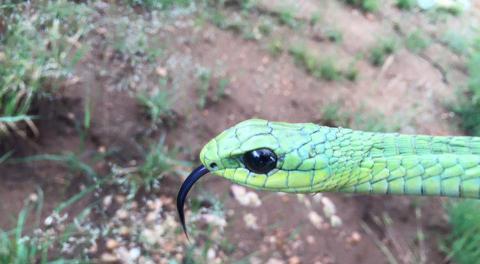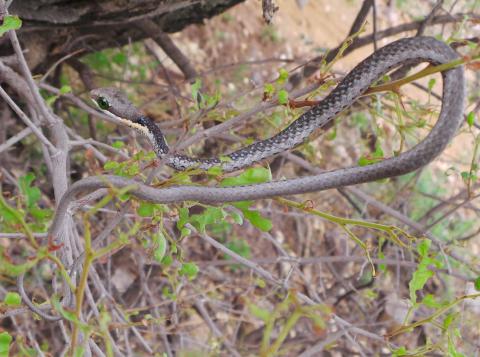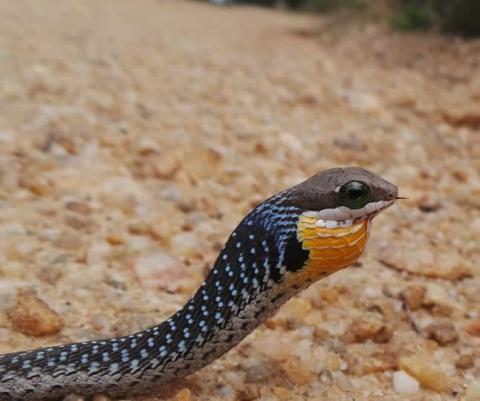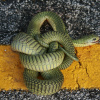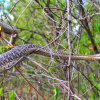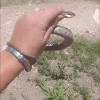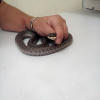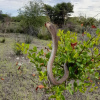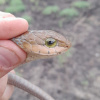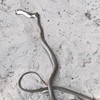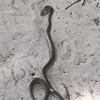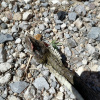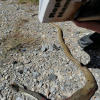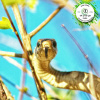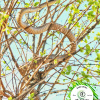Summary details for Dispholidus typus viridis
If you are unsure of the identification of a snake you have observed, you can ask an expert for snake identification by uploading a photo to the Snakes of Namibia facebook page.
You can also get help from their amazing album of infographics of the common snake species in Namibia.
The facebook page also has contact details for snake catchers - people who are experienced in catching and removing snakes - throughout the country.
In the case of a snake bite, email "snakebite" to snakebitedoc@gmail.com. Namibia's snakebite expert - Dr Buys - will respond immediately.
Common Boomslang
Dispholidus typus viridis
The Boomslang is mostly active during the day and spends most of its time in trees and shrubs where it actively hunts for fledgling birds and chameleons. Boomslangs have also been observed hunting for frogs along streams and puddles.
Boomslangs have a short stubby head with a large eye. The colour varies; males are often bright green with black edged scales while females are light brown to grey. Juveniles are grey above with blue and orange speckles between the scales and the neck area is often yellow to orange, which is especially prominent when inflating the neck area. The eyes of juveniles are bright emerald green.
Highly venomous.
» See all records of Common Boomslang Dispholidus typus viridis

